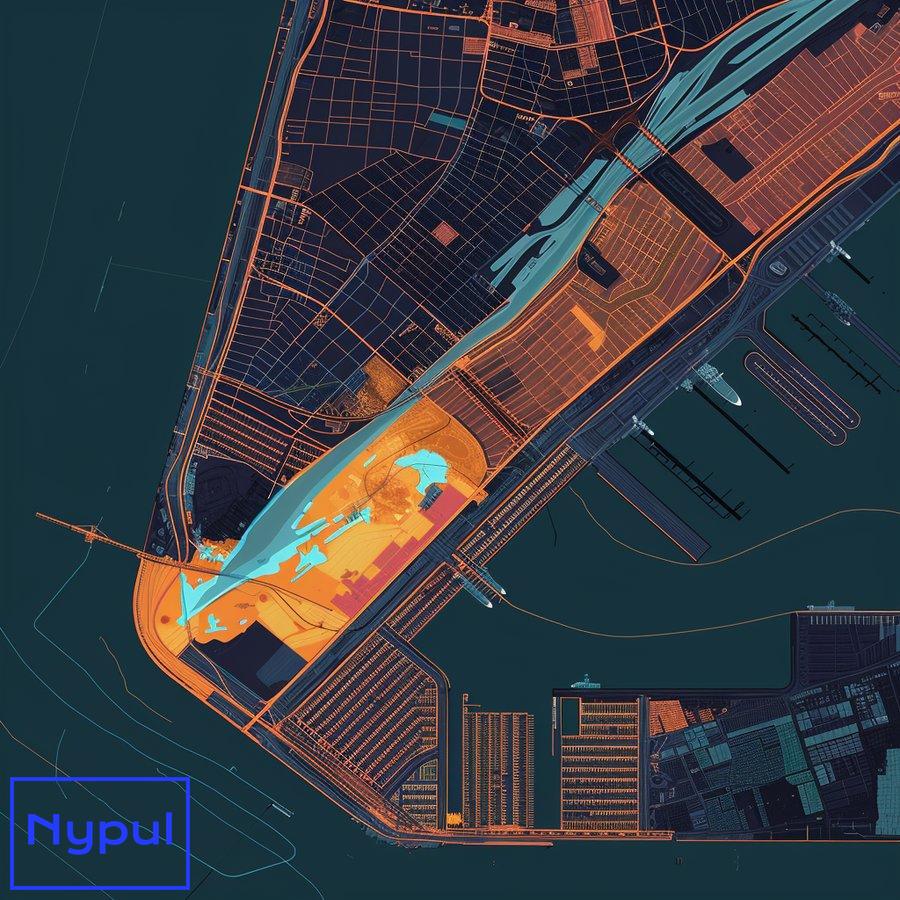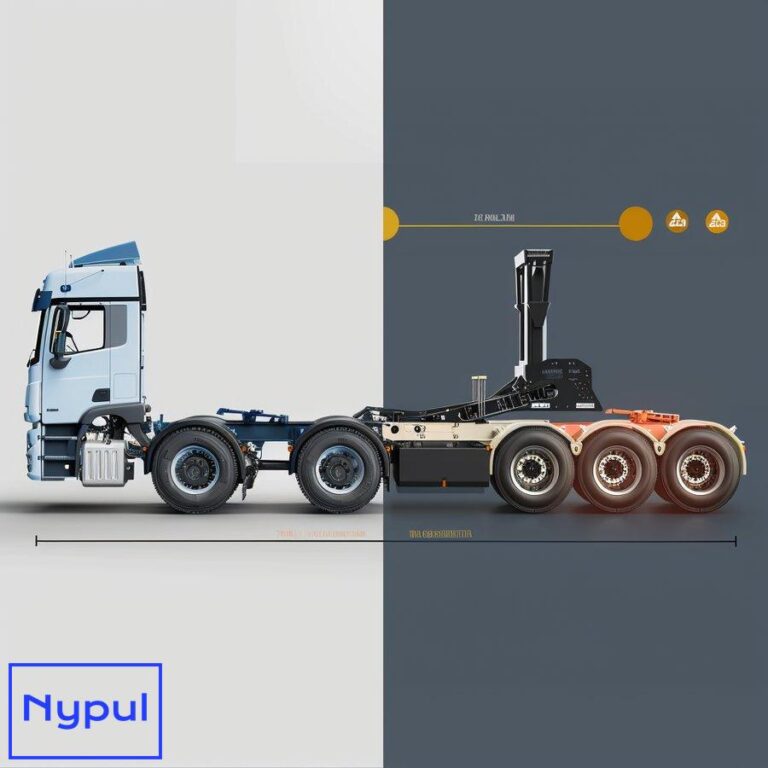What Is the Radius of Drayage
What is the Drayage Radius?
The drayage radius refers to the distance that a drayage truck typically travels to transport shipping containers between ports, rail terminals, warehouses, or other intermodal facilities. This short-haul movement of containers is a crucial part of the logistics chain, connecting different modes of transportation and ensuring the smooth flow of goods.
The standard drayage radius is generally considered to be within a range of 50 to 100 miles from the origin point, such as a seaport or rail yard. However, this distance can vary depending on factors like local regulations, driver availability, and the specific needs of the shipper or consignee.
It’s important to note that drayage is distinct from long-haul trucking, which involves transporting goods over much greater distances, often across state lines or even internationally. Drayage, on the other hand, is focused on short-distance moves within a limited geographic area, typically serving a specific port or metropolitan region.
Key Takeaways:
- Drayage radius is the distance a drayage truck travels to move containers between intermodal facilities
- The standard drayage radius is usually 50-100 miles from the origin point
- Drayage is different from long-haul trucking, focusing on short-distance moves within a specific area
How Does Drayage Radius Impact Logistics Operations?

The drayage radius plays a significant role in the efficiency and cost-effectiveness of logistics operations. A well-defined and optimized drayage radius can help companies streamline their supply chain, reduce transportation costs, and improve delivery times.
When the drayage radius is too small, it can limit the number of available trucks and drivers, leading to capacity constraints and potential delays in moving containers. This can result in longer dwell times at ports or rail yards, increased storage fees, and disruptions to the overall supply chain.
On the other hand, an excessively large drayage radius can lead to higher transportation costs, as trucks may need to travel longer distances and consume more fuel. This can also strain drivers, who may face longer working hours and reduced efficiency due to extended travel times.
Finding the right balance in the drayage radius is crucial for logistics operations. An optimal radius allows for efficient resource utilization, minimizes transportation costs, and ensures the timely movement of containers between intermodal facilities.
The Impact of Drayage Radius on Logistics Operations
| Aspect | Small Radius | Large Radius |
|---|---|---|
| Truck Availability | Limited | Ample |
| Transportation Costs | Lower | Higher |
| Delivery Times | Potential Delays | Faster |
| Driver Efficiency | Higher | Lower |
| Supply Chain Disruptions | More Likely | Less Likely |
What Factors Influence the Typical Drayage Radius?

Several factors can influence the typical drayage radius for a given region or logistics operation. Understanding these factors is essential for determining the optimal radius and ensuring efficient container movement.
Geographic Location
The geographic location of ports, rail terminals, and warehouses plays a significant role in determining the drayage radius. In areas with high concentrations of intermodal facilities, the radius may be smaller, as trucks can easily move between these points. In contrast, regions with more dispersed facilities may require a larger radius to ensure adequate coverage.
Infrastructure and Traffic Conditions
The quality of road infrastructure and prevailing traffic conditions can impact the drayage radius. Well-maintained highways and efficient road networks allow for faster travel times, enabling trucks to cover a larger radius. Conversely, congested roads or areas with frequent traffic bottlenecks may necessitate a smaller radius to maintain timely deliveries.
Driver Availability and Hours-of-Service Regulations
The availability of qualified drayage drivers and the hours-of-service regulations can influence the drayage radius. A shortage of drivers may limit the radius, as companies must prioritize trips within a smaller area to ensure adequate coverage. Additionally, hours-of-service regulations, which govern the maximum driving hours per day, can restrict the distance drivers can cover within a single shift.
Customer Requirements and Delivery Timeframes
The specific requirements of shippers and consignees, such as delivery timeframes and appointment schedules, can impact the drayage radius. If customers require expedited deliveries or have strict appointment windows, a smaller radius may be necessary to ensure timely service. On the other hand, customers with more flexible requirements may allow for a larger radius.
By considering these factors, logistics providers can determine the optimal drayage radius for their operations, balancing efficiency, cost-effectiveness, and customer service.
How Can Companies Calculate Their Optimal Drayage Radius?
Calculating the optimal drayage radius is essential for companies looking to streamline their logistics operations and minimize costs. By determining the ideal distance for container movements, businesses can ensure efficient resource utilization and maintain a competitive edge in the market.

Step 1: Analyze Historical Data
To begin calculating the optimal drayage radius, companies should analyze historical data on their container movements. This includes examining the origin and destination points, travel times, and associated costs for past shipments. By identifying patterns and trends in this data, businesses can gain insights into the most common and cost-effective routes.
Step 2: Consider Geographic Factors
Next, companies should consider the geographic factors that influence their drayage operations. This includes the location of ports, rail terminals, warehouses, and customer facilities. By mapping out these key points, businesses can visualize the geographic spread of their operations and identify potential areas for optimization.
Step 3: Evaluate Driver and Equipment Availability
The availability of drivers and equipment is another crucial factor in determining the optimal drayage radius. Companies should assess their current driver pool and fleet capacity, considering factors such as driver hours-of-service regulations and equipment maintenance schedules. This information can help identify any constraints that may impact the feasible radius.
Step 4: Conduct Cost-Benefit Analysis
To finalize the optimal drayage radius, companies should conduct a cost-benefit analysis. This involves comparing the costs associated with different radius options, such as fuel expenses, driver wages, and equipment wear and tear, against the potential benefits, such as improved delivery times and reduced storage fees. By weighing these factors, businesses can determine the radius that offers the best balance of efficiency and cost-effectiveness.
Step 5: Continuously Monitor and Adjust
Once the initial optimal drayage radius is established, companies should continuously monitor their operations and adjust as needed. Changes in market conditions, customer requirements, or infrastructure may necessitate updates to the radius. By regularly reviewing performance metrics and gathering feedback from stakeholders, businesses can ensure their drayage radius remains optimized over time.
By following these steps and considering the unique factors affecting their operations, companies can calculate their optimal drayage radius and drive improvements in their logistics performance.
What Challenges Arise When Managing Drayage Radius?
Managing the drayage radius can present several challenges for logistics providers and businesses. These challenges can impact the efficiency and cost-effectiveness of container movements, making it essential for companies to proactively address them.
Capacity Constraints and Equipment Shortages
One of the primary challenges in managing drayage radius is dealing with capacity constraints and equipment shortages. During peak shipping seasons or periods of high demand, there may be a limited number of available trucks and drivers to handle container movements. This can lead to delays, increased costs, and potential disruptions to the supply chain.
To mitigate this challenge, companies can work to develop strong relationships with reliable drayage providers and ensure they have access to a sufficient pool of drivers and equipment. Additionally, implementing advanced scheduling and dispatching systems can help optimize resource allocation and minimize the impact of capacity constraints.
Traffic Congestion and Infrastructure Limitations
Traffic congestion and infrastructure limitations can also pose challenges when managing drayage radius. Heavy traffic in port areas or along key transportation routes can lead to longer travel times and reduced efficiency. Similarly, inadequate road infrastructure or limited access to intermodal facilities can restrict the feasible radius and impact the timely movement of containers.
To address these challenges, companies can leverage real-time traffic data and routing optimization tools to identify the most efficient paths for their drayage operations. Collaborating with local authorities and industry partners to advocate for infrastructure improvements can also help alleviate long-term constraints.
Regulatory Compliance and Documentation Requirements
Ensuring compliance with various regulations and managing the necessary documentation can be challenging when operating within a drayage radius. This includes adhering to driver hours-of-service rules, maintaining accurate records for customs clearance, and complying with environmental and safety regulations.
To streamline compliance and documentation processes, companies can invest in digital solutions and automation tools. These technologies can help ensure accurate record-keeping, provide real-time visibility into compliance status, and reduce the administrative burden on drayage operators.
Balancing Cost and Service Level Expectations
Finally, managing drayage radius often involves balancing cost and service level expectations. Customers may demand faster delivery times or more flexible scheduling, which can put pressure on drayage operators to expand their radius. However, this expansion can come at the cost of increased transportation expenses and reduced efficiency.
To strike the right balance, companies must clearly communicate with customers about the feasibility and implications of different service level options. By setting realistic expectations and collaborating to find mutually beneficial solutions, businesses can maintain a cost-effective drayage radius while still meeting customer needs.
By proactively addressing these challenges and implementing strategies to mitigate their impact, companies can effectively manage their drayage radius and ensure the smooth flow of containers throughout their logistics operations.
How Can Businesses Extend Their Drayage Radius Effectively?
In some cases, businesses may need to extend their drayage radius to accommodate growing customer demands, expand into new markets, or improve overall logistics efficiency. However, extending the radius must be done strategically to avoid increased costs and operational challenges. Here are some effective ways businesses can extend their drayage radius:
Collaborate with Regional Drayage Providers
One approach to extending the drayage radius is to collaborate with regional drayage providers. By partnering with operators who have a strong presence in the desired expansion areas, businesses can leverage their local expertise, driver networks, and equipment resources. This collaboration allows companies to extend their reach without the need for significant investments in new assets or personnel.
When selecting regional partners, it’s essential to evaluate their performance history, safety record, and ability to meet service level expectations. Establishing clear communication channels and performance metrics can help ensure a seamless integration and maintain the quality of drayage services.
Implement Hub-and-Spoke Distribution Models
Another strategy for extending the drayage radius is to implement a hub-and-spoke distribution model. In this approach, companies establish a central hub facility within their core drayage radius and then use smaller, regional facilities (spokes) to extend their reach. Containers are initially moved to the hub, where they are consolidated and then transported to the appropriate spoke facility for final delivery.
The hub-and-spoke model allows businesses to maintain efficiency within their core radius while strategically expanding their coverage area. By consolidating shipments at the hub, companies can optimize transportation costs and reduce the number of long-distance trips required.
Leverage Intermodal Transportation Options
Intermodal transportation, which involves the use of multiple modes such as trucks, trains, and ships, can be an effective way to extend the drayage radius. By leveraging rail or barge services for long-distance moves, businesses can reduce the reliance on trucks for extended trips. This approach can help mitigate the impact of driver shortages, reduce fuel costs, and improve overall transportation efficiency.
To successfully incorporate intermodal options, companies must develop strong relationships with rail and barge operators, ensure seamless transitions between modes, and carefully plan shipment schedules to minimize delays.
Invest in Technology and Data Analytics
Investing in technology and data analytics can help businesses optimize their drayage operations and effectively extend their radius. Transportation management systems (TMS) and real-time visibility platforms can provide valuable insights into route optimization, carrier performance, and shipment status. By leveraging this data, companies can identify opportunities to expand their radius while maintaining efficiency and cost-effectiveness.
Additionally, advanced analytics tools can help businesses forecast demand, predict potential disruptions, and make informed decisions about resource allocation. This proactive approach enables companies to adapt their drayage strategies and ensure they have the necessary capacity to support an extended radius.
By implementing these strategies and continually evaluating their effectiveness, businesses can successfully extend their drayage radius and improve overall logistics performance. However, it’s crucial to carefully consider the costs, benefits, and potential risks associated with each approach to ensure a sustainable and profitable expansion.
Strategies for Optimizing Drayage Radius
Optimizing the drayage radius is crucial for businesses looking to improve efficiency, reduce costs, and enhance customer satisfaction. By implementing strategic initiatives and leveraging technology, companies can streamline their drayage operations and ensure the smooth flow of containers within their network. Here are some key strategies for optimizing drayage radius:
Implement Dynamic Routing and Scheduling
![]()
Dynamic routing and scheduling involve the use of advanced algorithms and real-time data to optimize truck routes and delivery schedules. By considering factors such as traffic conditions, driver availability, and customer requirements, these systems can help businesses identify the most efficient paths and minimize empty miles.
Implementing dynamic routing and scheduling can help companies reduce fuel costs, improve asset utilization, and enhance on-time delivery performance. Additionally, these systems can quickly adapt to changes in demand or disruptions, ensuring that the drayage radius remains optimized even in the face of unexpected challenges.
Foster Collaboration and Communication
Effective collaboration and communication among all stakeholders in the drayage process are essential for optimizing the radius. This includes strong partnerships with carriers, customers, and intermodal facilities. By establishing clear lines of communication and sharing real-time information, businesses can ensure that all parties are aligned and working towards common goals.
Collaborative initiatives, such as joint planning sessions and performance reviews, can help identify areas for improvement and drive continuous optimization. By fostering a culture of transparency and cooperation, companies can more effectively manage their drayage radius and respond to changing market conditions.
Embrace Automation and Digital Transformation
Automation and digital transformation can play a significant role in optimizing the drayage radius. By leveraging technologies such as artificial intelligence, machine learning, and the Internet of Things (IoT), businesses can gain real-time visibility into their operations and make data-driven decisions.
For example, automated appointment scheduling systems can streamline the process of coordinating container pickups and deliveries, reducing wait times and improving asset utilization. Similarly, IoT-enabled tracking devices can provide real-time updates on container location and status, enabling proactive management of potential delays or disruptions.
Continuously Monitor and Analyze Performance
To ensure ongoing optimization of the drayage radius, businesses must continuously monitor and analyze their performance. This involves tracking key metrics such as on-time delivery rates, dwell times, and cost per move. By regularly reviewing this data and identifying trends or anomalies, companies can quickly identify areas for improvement and take corrective action.
Performance monitoring should also include gathering feedback from customers, carriers, and other stakeholders. This qualitative data can provide valuable insights into the effectiveness of current processes and highlight opportunities for further optimization.
Invest in Driver Training and Retention
Finally, investing in driver training and retention is crucial for optimizing the drayage radius. Skilled and experienced drivers are essential for ensuring the safe and efficient movement of containers. By providing comprehensive training programs and competitive compensation packages, businesses can attract and retain top talent in the drayage industry.
Additionally, implementing driver-friendly policies, such as flexible scheduling and predictable routes, can help improve job satisfaction and reduce turnover. By prioritizing driver well-being and engagement, companies can build a stable and reliable workforce that is well-equipped to optimize the drayage radius.
By implementing these strategies and continually adapting to changing market conditions, businesses can effectively optimize their drayage radius and drive long-term success in their logistics operations. However, it’s important to recognize that optimization is an ongoing process that requires a commitment to continuous improvement and a willingness to embrace new technologies and approaches.




